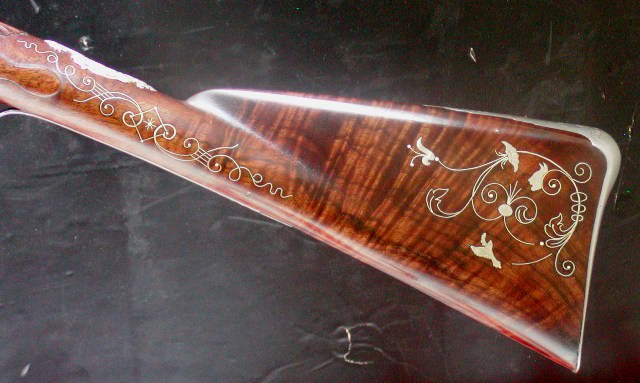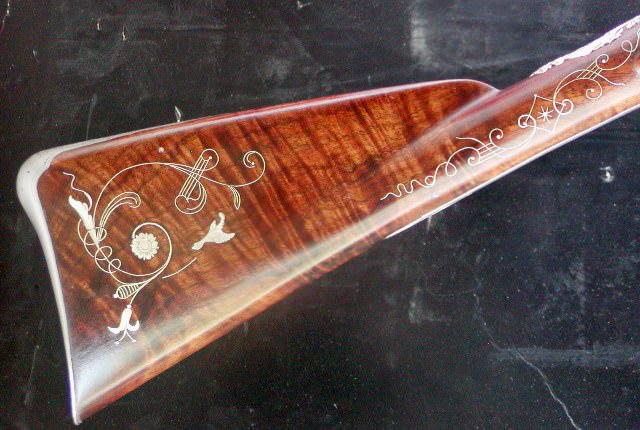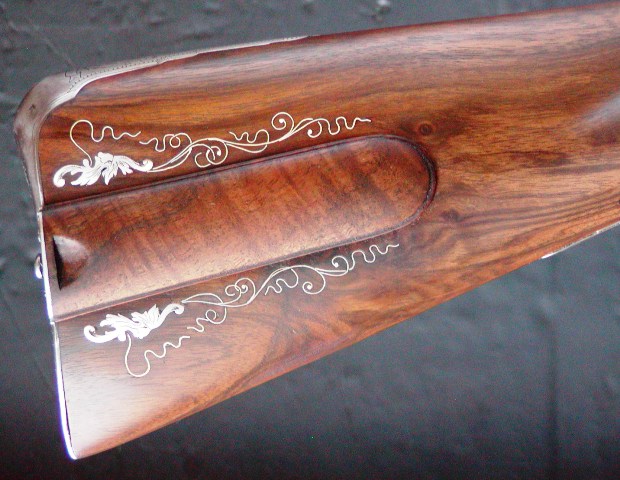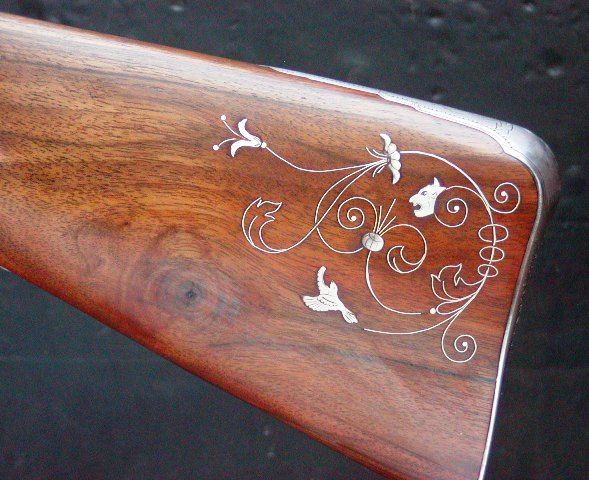- Joined
- Apr 27, 2005
- Messages
- 124
- Reaction score
- 244
A very informative video on tung oil and tung oil finishes.

Hi,@dave_person Do you use interior or exterior? Sealer or no?





A very informative video on tung oil and tung oil finishes.
LOL! I think there is a story that Hacker Martin mixed up varnishes made with some sort of fish oil because it was cheap and available. Supposedly, you can still smell the oil in the stocks.I wouldn’t use any kind of tuna oil on my work!
“If you’re going to use a 100% organic tuna oil linseed oil finish, you’ll need a few things.“
Nice work! The first one is beautiful but the last one is more suited for a riflr to me? You know opinions are like, you know the rest, every one has one! LOL!Hi,
Ignore the interior or exterior labels. Exterior usually means the finish has UV light blockers. It is what you might choose if you are painting the rails of a deck. The exterior finishes are just fine for gunstocks and virtually all finishes you guys use for guns would be classified as "interior". I usually do apply thinned first coats (often 50% mineral spirits) to act as a sealer of sorts. No finish penetrates very deeply but a couple of thinned first coats can soak in better in very dense woods such as maple and walnut. If you finish walnut using the sanding slurry grain sealer method, my first coats is mostly unthinned except it often has alkanet root stain infused in turpentine mixed with it, which thins it a little by default. I typically use Sutherland-Welles polymerized tung oil medium sheen. The medium sheen has a pretty shiny gloss so I often add mineral spirits to soften the sheen. Here are two examples in English walnut showing the unthinned finish medium sheen and a softened gloss using thinned finish.
medium sheen


softened sheen


dave
That gun looks like it was made in Rivendell!Hi,
Ignore the interior or exterior labels. Exterior usually means the finish has UV light blockers. It is what you might choose if you are painting the rails of a deck. The exterior finishes are just fine for gunstocks and virtually all finishes you guys use for guns would be classified as "interior". I usually do apply thinned first coats (often 50% mineral spirits) to act as a sealer of sorts. No finish penetrates very deeply but a couple of thinned first coats can soak in better in very dense woods such as maple and walnut. If you finish walnut using the sanding slurry grain sealer method, my first coats is mostly unthinned except it often has alkanet root stain infused in turpentine mixed with it, which thins it a little by default. I typically use Sutherland-Welles polymerized tung oil medium sheen. The medium sheen has a pretty shiny gloss so I often add mineral spirits to soften the sheen. Here are two examples in English walnut showing the unthinned finish medium sheen and a softened gloss using thinned finish.
medium sheen


softened sheen


dave
Tung oil lovers might like this. Looks like it wasn't common in this country as early as some might think.
https://foresthistory.org/wp-content/uploads/2016/12/2013_TungOil_Rise-and-Fall.pdf
After reading Dave’s post, I am more inclined to use a varnished infused Tung Oil vs straight Tung oil to finish my bare stock. I read conflicting views on pure Tung Oil. Some say easy, drys quickly, leaves a hard finish. Others says it takes forever and is not weather proof. A quart of Walrus pure Tung Oil I have on hand, claims excellent for outside furniture. These are conflicting at best. Moving on, the elder gentleman who gifted me the rifle, got wind I was finishing (refinishing) the rifle and told my wife he better not see a sheen on it. Further, that only BLO should be used. I would prefer not. What did the old timers use? Anyone’s guess I assume. I’m sure animal fat wasn’t out of the question. But I digress. I looked at the Sutherland Welles site. The least glossy would be my pick. Dave showed Gloss and medium gloss. Anyone with pics showing low gloss?Hi,
Ignore the interior or exterior labels. Exterior usually means the finish has UV light blockers. It is what you might choose if you are painting the rails of a deck. The exterior finishes are just fine for gunstocks and virtually all finishes you guys use for guns would be classified as "interior". I usually do apply thinned first coats (often 50% mineral spirits) to act as a sealer of sorts. No finish penetrates very deeply but a couple of thinned first coats can soak in better in very dense woods such as maple and walnut. If you finish walnut using the sanding slurry grain sealer method, my first coats is mostly unthinned except it often has alkanet root stain infused in turpentine mixed with it, which thins it a little by default. I typically use Sutherland-Welles polymerized tung oil medium sheen. The medium sheen has a pretty shiny gloss so I often add mineral spirits to soften the sheen. Here are two examples in English walnut showing the unthinned finish medium sheen and a softened gloss using thinned finish.
medium sheen


softened sheen


dave
If confirmed, I think I will make my own brew. I have the Tung Oil, & mineral spirits, I’d just need a fresh can of spar varnish for a 1/3 mix. I’ve done this before for other furniture and gun stocks with great results. What do ya think?I’ve read here that original long guns were sealed with varnish. For my argument, that’s good news. I really don’t want to disappoint my friend who gifted me this rifle, but if I can argue that historical fact if true it’s a win win. Can anyone confirm this?
Tung Oil is water proof and doesn't darken with age. It is a good finish but drying time for full protection is around twenty to 30 days. or so depending on your climate. Tung Oil can be touched up if need be without any major concern nor work. I really like this factor! The only down side I have witnessed is it isn't very durable. I have use a lot of it and this is the only part I am not happy with. I see no problem using it on a rifle stock if one is careful in handling the rifle. If you are not accustom to using it I would suggest not using pure Tung Oil. Also multiple thin coats wiped off Is what I find does best for me.I have found if you flood it on your work it can become a long wait to dry even though you wipe it off.After reading Dave’s post, I am more inclined to use a varnished infused Tung Oil vs straight Tung oil to finish my bare stock. I read conflicting views on pure Tung Oil. Some say easy, drys quickly, leaves a hard finish. Others says it takes forever and is not weather proof. A quart of Walrus pure Tung Oil I have on hand, claims excellent for outside furniture. These are conflicting at best. Moving on, the elder gentleman who gifted me the rifle, got wind I was finishing (refinishing) the rifle and told my wife he better not see a sheen on it. Further, that only BLO should be used. I would prefer not. What did the old timers use? Anyone’s guess I assume. I’m sure animal fat wasn’t out of the question. But I digress. I looked at the Sutherland Welles site. The least glossy would be my pick. Dave showed Gloss and medium gloss. Anyone with pics showing low gloss?
Here is a gun with low gloss POLYMERIZED tung oil.After reading Dave’s post, I am more inclined to use a varnished infused Tung Oil vs straight Tung oil to finish my bare stock. I read conflicting views on pure Tung Oil. Some say easy, drys quickly, leaves a hard finish. Others says it takes forever and is not weather proof. A quart of Walrus pure Tung Oil I have on hand, claims excellent for outside furniture. These are conflicting at best. Moving on, the elder gentleman who gifted me the rifle, got wind I was finishing (refinishing) the rifle and told my wife he better not see a sheen on it. Further, that only BLO should be used. I would prefer not. What did the old timers use? Anyone’s guess I assume. I’m sure animal fat wasn’t out of the question. But I digress. I looked at the Sutherland Welles site. The least glossy would be my pick. Dave showed Gloss and medium gloss. Anyone with pics showing low gloss?


Hi Wiscoaster,Tru-Oil and Minwax Tung Oil Finish are too shiny for a vintage-look gunstock if just left to dry and cure. Excess sheen is easily dealt with. Too little sheen is not. Therefore I'd rather use a polymerized oil finish because it's faster and its level of sheen can be moderated and the end result is the same.